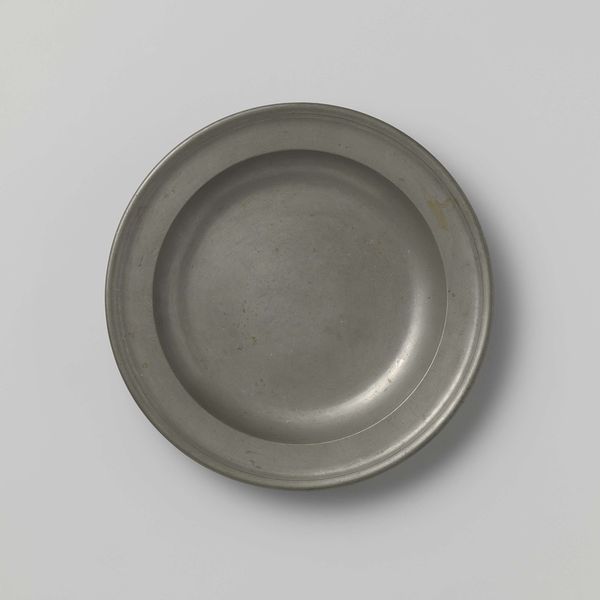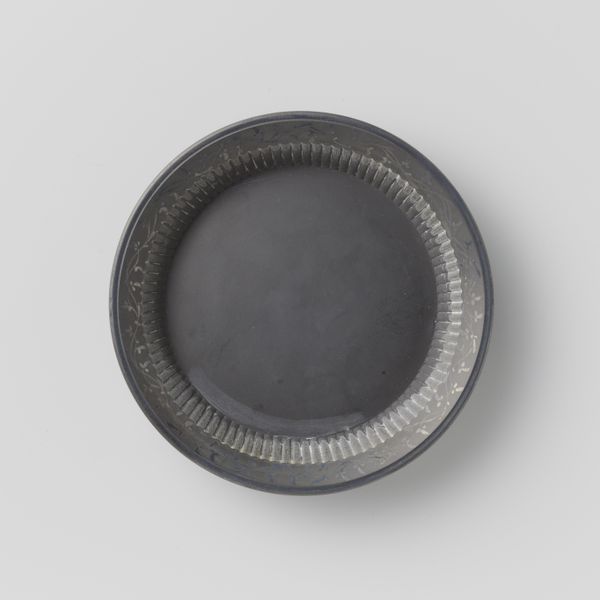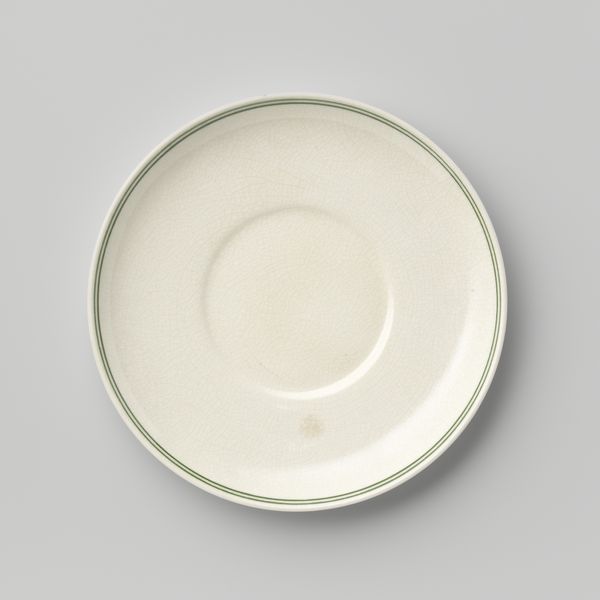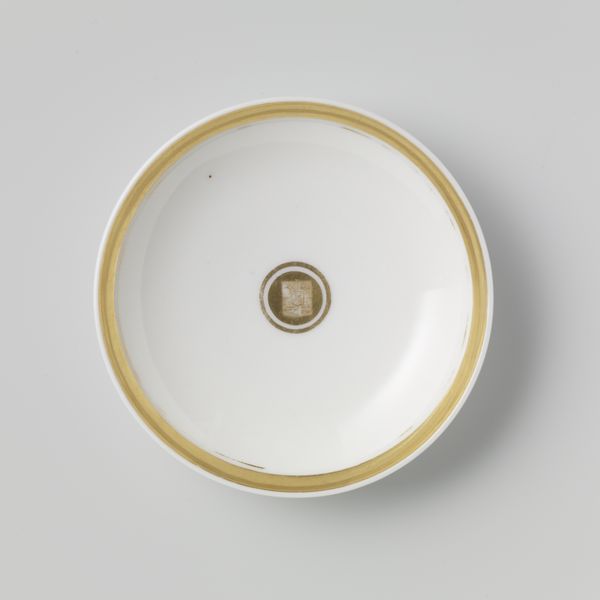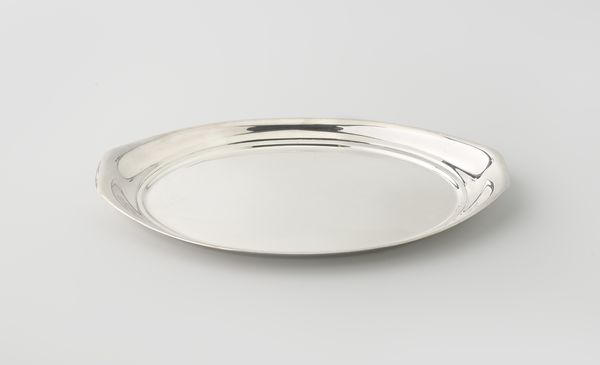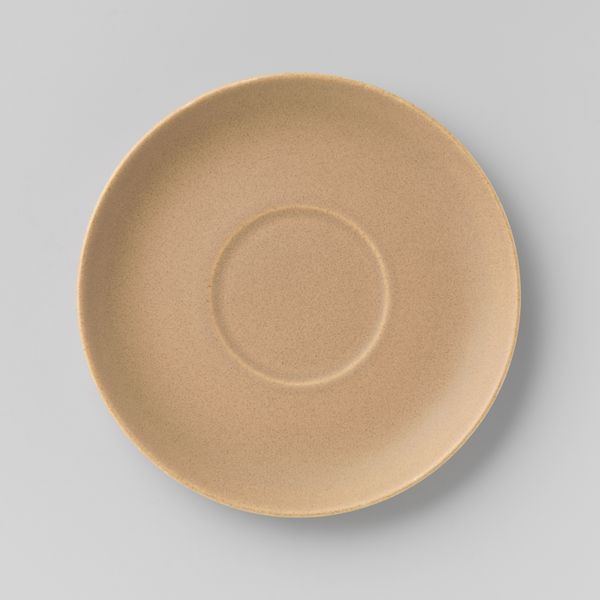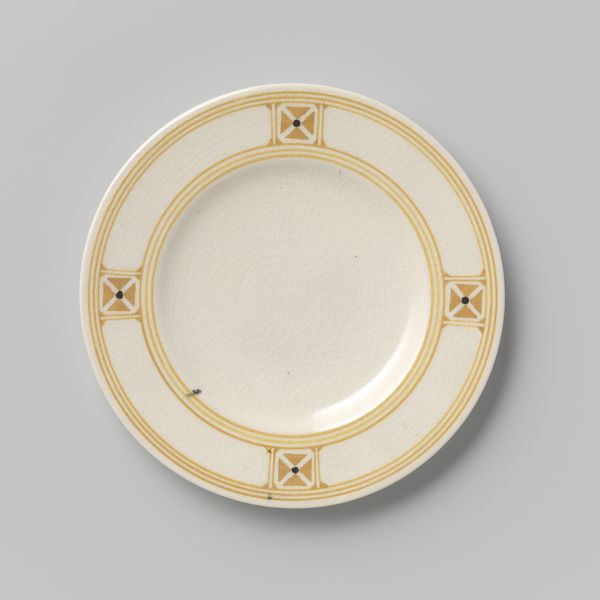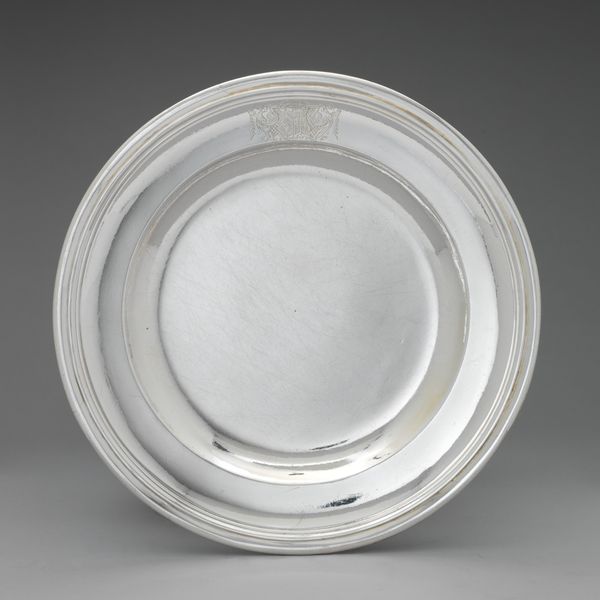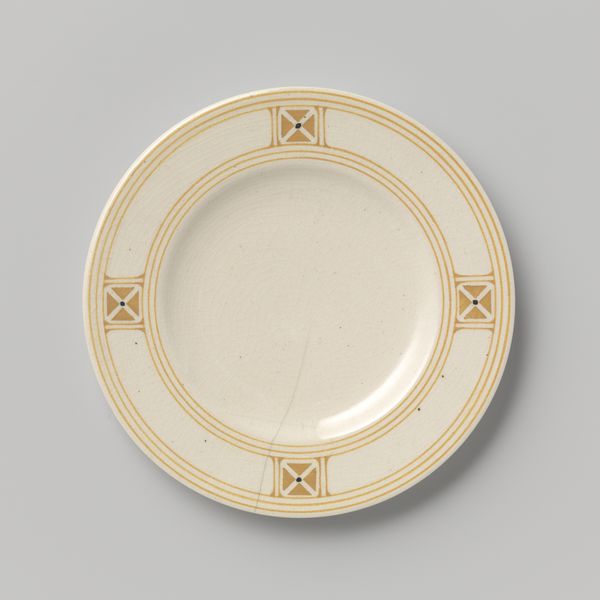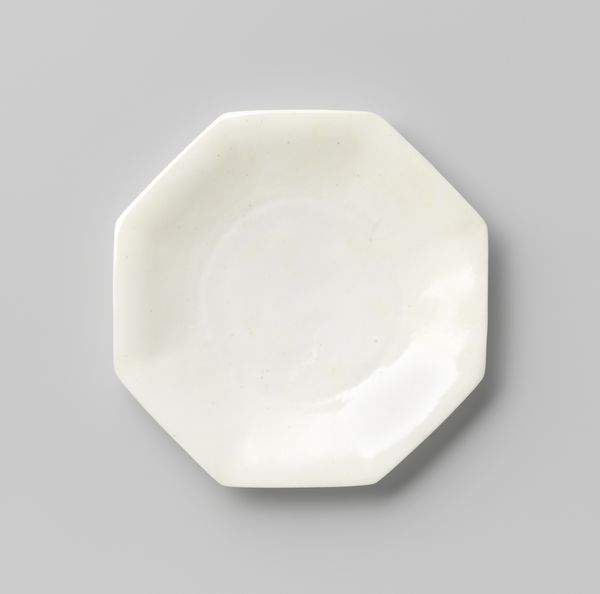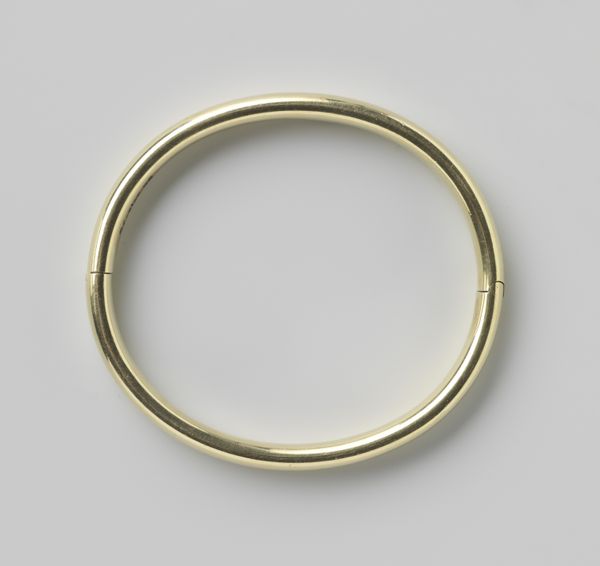
silver, metal
#
product photograph merchandise
#
circular oval feature
#
silver
#
3d printed part
#
metal
#
product fashion photography
#
virtual 3d design
#
product design photgrpaphy
#
3d shape
#
white focal point
#
metallic object render
#
product photography
#
decorative-art
#
modernism
Dimensions: height 27 cm, weight 2237 gr
Copyright: Rijks Museum: Open Domain
Curator: Let's delve into Carel Begeer's "Broodschaal" from 1927, crafted from silver. It presents as a seemingly simple, circular form. Editor: My immediate impression is of quiet elegance. The polished silver gives it a restrained glow. It feels very… bourgeois? Curator: Precisely. Begeer's work sits within a fascinating moment in the Netherlands, particularly concerning the burgeoning middle class and their evolving aesthetics. Objects like this silver "Broodschaal", or bread dish, speak to the democratization of luxury, or at least the aspiration for it. Editor: It's interesting to consider how function intersects with aspiration. Was silver tableware a common sight or statement in 1920s Dutch households? Or a visual signal to belong to a certain tier in society? Curator: Silver had always been a signifier of wealth and status. However, designs like these are relatively spare in ornament; their value lay not so much in ostentatious display, as in refined craftsmanship. Begeer’s company positioned itself as providing modern, functional objects. Note that these new aesthetic movements also emphasized clean lines as a reflection of moral purity and efficiency—echoing contemporaneous sociopolitical movements. Editor: You're suggesting a relationship between the design and the ethics of the time, a rejection of decadence in favour of more practical, modern living. What statements might it convey in different hands, and what are the ethics and politics involved? Who is invited to eat and take of this “bread” Curator: That's the crux of it. Objects acquire meaning not only from the intent of the maker, but also the ways in which they are used and displayed, consumed. This object made of luxury metal evokes discussions surrounding distribution and consumption. A question such as "Who does get to eat, literally and metaphorically" becomes salient. It acts almost as a mirror reflecting cultural dynamics of wealth. Editor: I see it. Something that presents so plainly becomes an arena for exploring power, access, and representation. Ultimately, it challenges us to critically examine the societal structures reflected in such seemingly simple objects. Curator: Absolutely. What appears straightforward opens up critical narratives when examined through a wider social and historical lens. Editor: Indeed. A simple silver bowl can contain a universe of cultural significance.
Comments
No comments
Be the first to comment and join the conversation on the ultimate creative platform.
